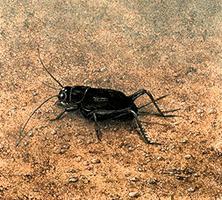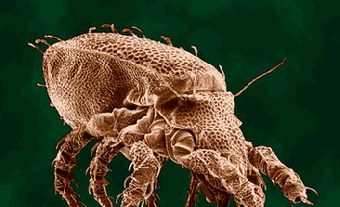
Over 2000 species of true crickets (superfamily Grylloidea) are known worldwide. Closely related species include the long-horned grasshoppers, basement-inhabiting camel crickets and katydids. All belong to the order Grylloptera, with 96 representatives in Canada.
Structure
These species resemble grasshoppers with long antennae. Crickets are frequently wingless. All have hind legs adapted for leaping. Their front wings, when present, lie flat on the back; the ovipositor is needlelike or spear-shaped. Most species are nocturnal and feed on plant and animal matter.
Reproduction and Development
Eggs are laid singly in the ground, or in twigs by some species. These eggs overwinter, producing one generation annually in northern areas. The chirping songs of true crickets, often high-pitched, pulsating or buzzing, are very familiar. Usually, only the males produce these sounds, which are used to attract females.
Interaction with Humans
Crops and gardens can be severely damaged by black field crickets (genus Gryllus), which can also invade dwellings in autumn. Twigs and berry canes are damaged by pale green tree crickets (genus Oecanthus).

 Share on Facebook
Share on Facebook Share on X
Share on X Share by Email
Share by Email Share on Google Classroom
Share on Google Classroom



